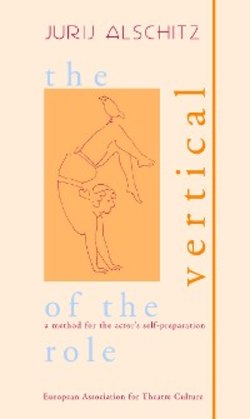Читать книгу The Vertical of the Role - Jurij Alschitz - Страница 7
Оглавление2. The invisible life of visible things
Interpreting the later works of Stanislavsky and in particular his method of physical actions in a somewhat bizarre way, many teachers and theatre directors often recommend that actors follow a certain order in their work on the role. In their opinion, the actor should start with mastering the life of a human body, only later gradually homing in on the life of the spirit. To my mind, this is hardly a correct interpretation of that particular method; moreover it is indicative of a purely materialistic approach towards creating something alive.
That is probably one of the reasons why this methodology, propounded by Lee Strasberg, became so popular in the United States. Actors would often opt for this approach, it being easy to understand, rather than for the somewhat vague suggestion that they should concentrate on the spirit and inner light of a role.
However, after studying the life of a human body, the actor would go no further, being satisfied with the external outline of the role, with the natural behaviour associated with it, and with the inner logic and purposefulness of his actions. It is essentially impossible and even absurd to try and fill up the role with its inner spirit afterwards. The spirit is always something that precedes matter; it is the spirit that is the real foundation of life. I cannot imagine starting my work on a role other than by searching for its inner spirit and trying to comprehend it. The “life of the body“ is certainly an important issue but it should be dealt with simultaneously with the primary one. To me it seems strange to investigate the movement of the body or the sound of the voice of the actor on separate lines from this spiritual foundation – let alone trying to fix it separately. As Anatoly Vasiliev, my teacher, repeatedly told us, one should concentrate rather on investigating the spiritual life of the role, while the body together with the voice should remain in a perpetual state of improvisation. That is the only way one can hope to bring together the structured thinking and unstructured playing. With any other approach one would have to be satisfied with the usual clichés and a more or less clever imitation of the living process.
Let us consider the life of a person as a kind of movement along the line of its major events: a person is born, then we can look at his school years, take a glimpse of his first love, learn something about his education, his family, his job, his children, and so on. Whatever the specific events and whatever the order they come in, they all lead to an end with which all of us mortals are well familiar. If we regard and investigate human life according to these events from beginning to end, we can only hope to understand its visible part. However, the invisible life also exists. The life of the human spirit follows different rules and is filled with different events. This kind of life is less known and we do not often draw much attention to it. Its events are less noticeable and the road itself is devoid of any end; here our journey is directed towards infinity.
